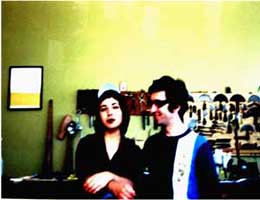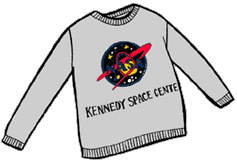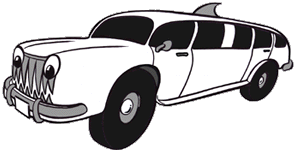|
Salvation Army worker jumpsuits from the '70s are amazingly timely finds in the now - and can even go "couture inspired" when donned with a heavily crocheted woolen wrap. Taking a cue from the couture collections, there just is not enough texture to go around. Luckily, some of the best textural aid can appear magically in the form of Grandma's afghan. Straight off the couch - and into a wrap over ensembles or outerwear. How do you like them apples? Think way outside the box in terms of interesting accessories in surprising colors, and mix them up with fluff-ly ruffle-y clothing from different sides of the texture fence. Wear tights with either clear plastic slip on mules or leather sandals. Bedroom slippers with little heels, and long cordoroy skirts. Ruffles with leather. Fight following all textural lines that used to make sense.  
One of the lead singers in this season's band is leather. But, not the old school rock and roll black genre. Bags from the San Francisco based mapuche duo (above) have started their migration across the US. Made from sturdy saddle leather by this designing art and sculpting duo. Chilean born Miguel Munoz and Damarise Contreras perfected their detail assigning trade as museum renovators back in their Madrid days with a foundation that only a saddle making apprenticeship can provide. The bag above - fakes a good briefcase/schoolbag by keeping contents flat and tidy - and won't ever make you look like a suit. Available at NYC's TG170 & Steven Alan, LA's NYSE, Taxi in San Francisco and Lewis Boston. The hyper trend towards leather/rubber/vinyl arm bandage was more than just a throwback to the rock/punk era, but was a "timely reinvention" - with enough of a touch of empowering modern superior to keep today's trendsetters happy. Designer Jutta Neumann - whose shop is in the heart of New York's East Village street scenes was almost solely responsible for the rebirth of the wristband trend. All of her pieces - able to satisfy leather cravings from bags to sandals - are very simple with beautiful high quality finishes, and take color chances that didn't really happen in the very black days of punk. Although leather wearers should not tempt fate, being too uptight can take all the fun out of your leather wearing. Jutta offers up some tips.
Science finds its way into the fashion world through modern fabric technology and various European glow-in-the-dark appliqués all the time. Think aerodynamic sneakers, Francoise Girbaud, and WL&T. Skin saving beauty secrets arrive from astronauts by way of NASA - and now there's a psychological twist to hair. Just when you were merely debating the usual chunks vs. thin lowlights fall hair dilemma. Hair used to be about bigger and blonder in the South, and darker and flatter up North. Brother sister science duo, John and Catherine Walter, trained respectively in nuclear physics and cultural anthropology, just released an actual scientific theory regarding hairparts. The Walter hair part theory states that the way one parts one's hair has an impact on one's relationships, how one is perceived and what one projects. Apparently there is a masculine projection to left side hair parters, and right siders project the feminine and nurturing, coordinating with left brain/right brain activities. Guess what side Hilary Clinton parts on? In the Superman movie - instinctive as those hairdressers are - Clark Kent was a nurturing right part kinda guy and Super-hero-man came out of the phone booth all left parted - and it worked. John Walter claims that as we enter the year 2000 and the Age of Aquarius in fashion, the increase on the part of the partless look reaches towards a more balanced civilization. Perfectly timed as the no-part hairdo projects that au courant non-uptight image.
© Fashion Icon September 1999 |
 The evolution of fashion silhouettes to come is easy to predict once you figure out that the re-morphing aspect is constant. Think back - way back to baby T craze. Marry that idea with last season's elbow length cuffed shirts from stateside and Europe - the result is the perfect fall top that you got in a teeny boy size so the sleeves hit you right in the elbows.
The evolution of fashion silhouettes to come is easy to predict once you figure out that the re-morphing aspect is constant. Think back - way back to baby T craze. Marry that idea with last season's elbow length cuffed shirts from stateside and Europe - the result is the perfect fall top that you got in a teeny boy size so the sleeves hit you right in the elbows.
 A linear sprinkling of "uniform that functions", in your "fall wardrobe" is still a good thing. You can make it work, but just not head to toe unless you really dig the park ranger look. You can also save a buck by getting the real thing, rather than a designer's "interpretation". The best new workwear pieces come from Dickies and are now available in truly sick new colors like bright orange and electric blue - and come with the most authentic history. Not only did Dickies introduce the first American "khaki" pants all without the help of a national swing dance campaign, but they also invented permanent press fabric in the '50s. Other "non-fashion" item staples that can work well now - if you're in true touch with your style chakra - are basic polo tops or dresses. Just not with the workwear pants which work best with an unexpected mixer like a frilly, ruffley top or pastel cashmere cardigan - in a seemingly fighting combination like: sleeveless polo dress over fuschia leather pants or '70s Josie Natori ruffled wrap top over sky blue Dickies and Etienne Aigner heels...
A linear sprinkling of "uniform that functions", in your "fall wardrobe" is still a good thing. You can make it work, but just not head to toe unless you really dig the park ranger look. You can also save a buck by getting the real thing, rather than a designer's "interpretation". The best new workwear pieces come from Dickies and are now available in truly sick new colors like bright orange and electric blue - and come with the most authentic history. Not only did Dickies introduce the first American "khaki" pants all without the help of a national swing dance campaign, but they also invented permanent press fabric in the '50s. Other "non-fashion" item staples that can work well now - if you're in true touch with your style chakra - are basic polo tops or dresses. Just not with the workwear pants which work best with an unexpected mixer like a frilly, ruffley top or pastel cashmere cardigan - in a seemingly fighting combination like: sleeveless polo dress over fuschia leather pants or '70s Josie Natori ruffled wrap top over sky blue Dickies and Etienne Aigner heels...
 The fun part about the year 2000 is that we can start saying "that's soooh '90s", although what that means has not yet been exactly revealed. We could very well look back on this decade as having the same motives as the '80s only with better disguised marketing ploys. Strategic horizontal alliances are definitely booming in fashion. From the surfwear licensing of the Paskowitz surf family through the Hilfiger Empire and Hello Kitty's launch at TARGET to the Sony branding of as many pop and TV stars as possible to clothing lines. One phrase that you can start using straight away is "
The fun part about the year 2000 is that we can start saying "that's soooh '90s", although what that means has not yet been exactly revealed. We could very well look back on this decade as having the same motives as the '80s only with better disguised marketing ploys. Strategic horizontal alliances are definitely booming in fashion. From the surfwear licensing of the Paskowitz surf family through the Hilfiger Empire and Hello Kitty's launch at TARGET to the Sony branding of as many pop and TV stars as possible to clothing lines. One phrase that you can start using straight away is "






